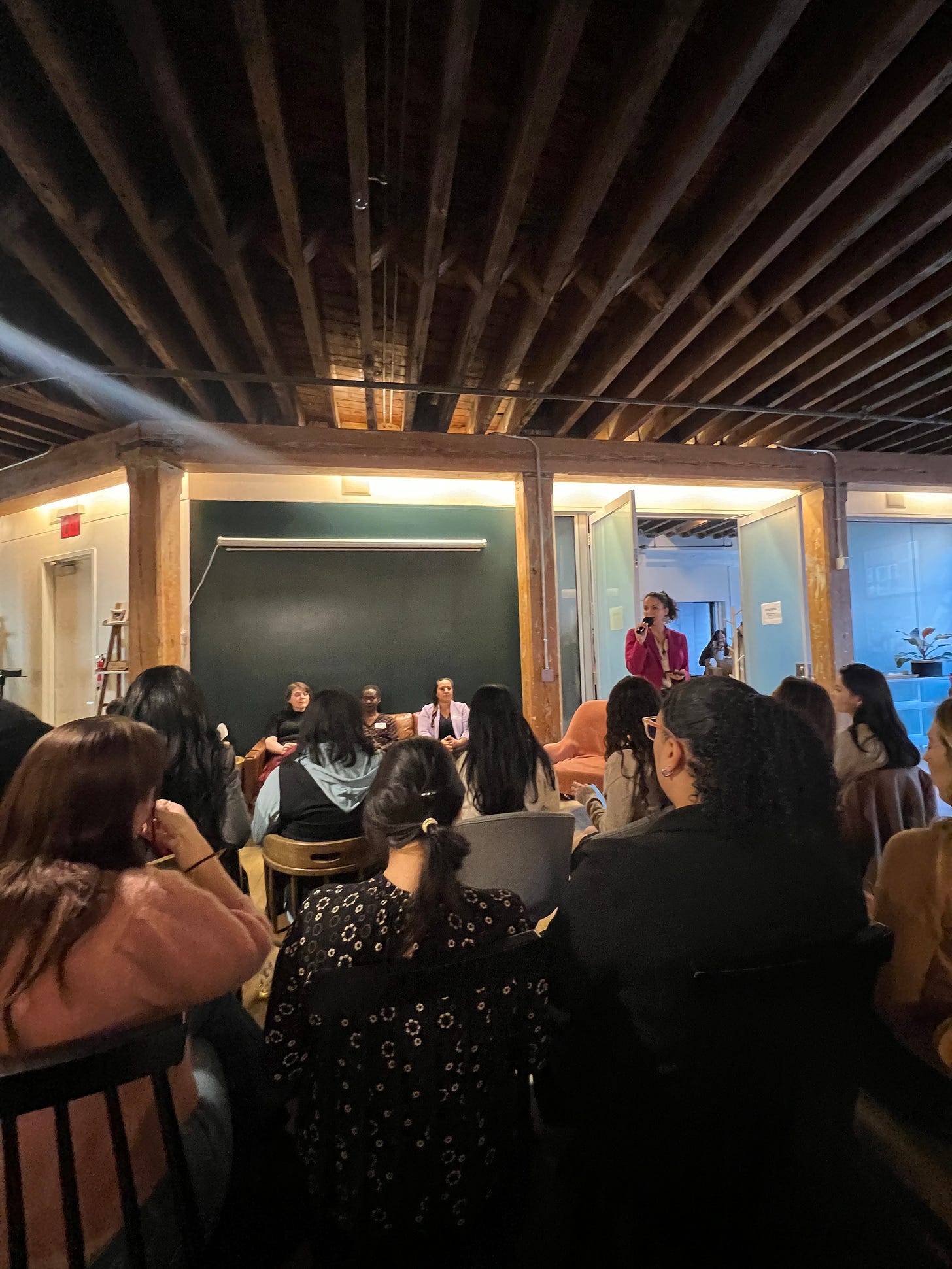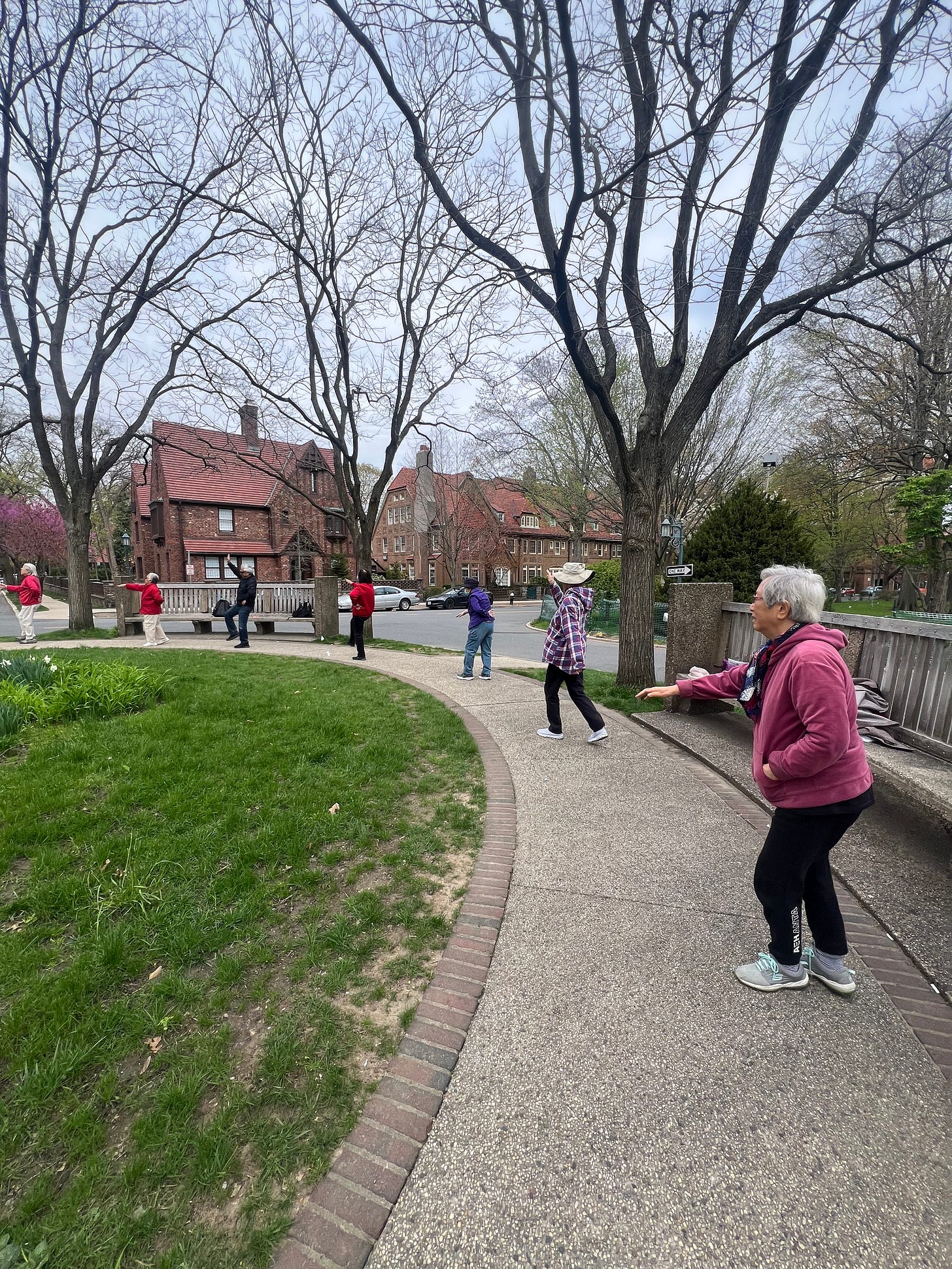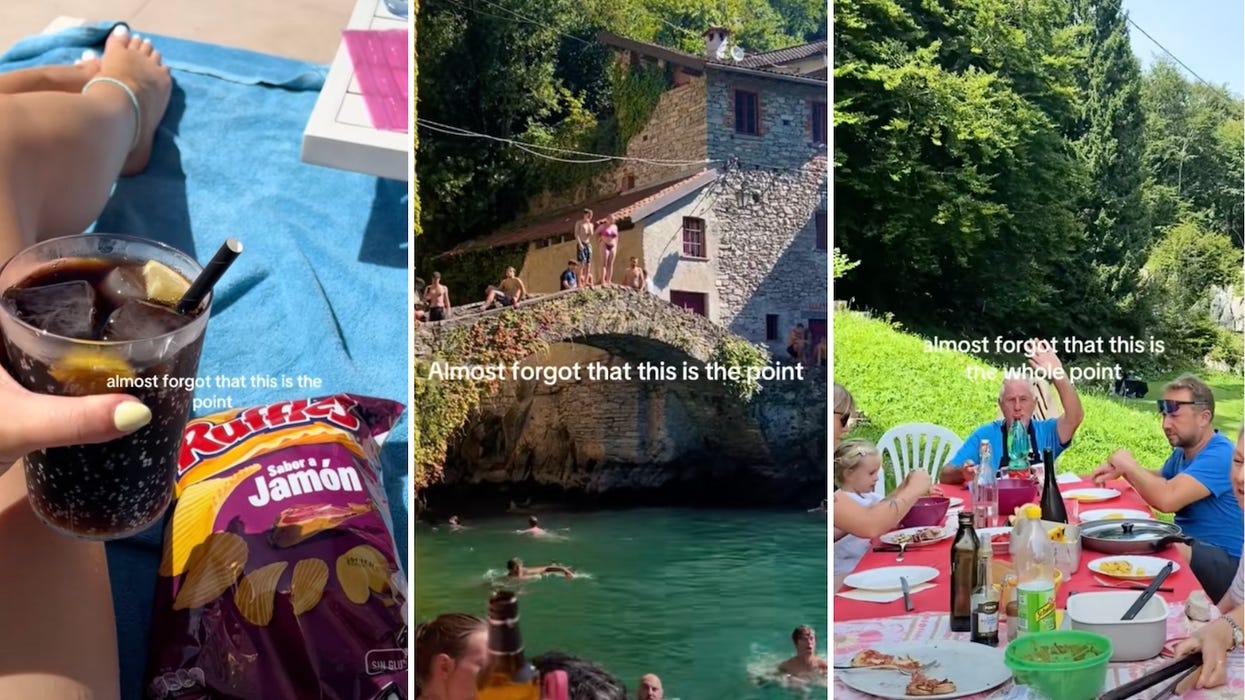AI Disrupts Women's Health. Gen Z Builds Trust Elsewhere. And the Obsession with Status
Because in a digital age, healthcare gets automated, credibility goes crowdsourced and clout becomes currency.
Founder Journey: “长命百岁, Live to 100.”
A 93-year-old Chinese woman told me that while we were doing morning stretches in the park. I’d joined her auntie crew on a whim, but now I go religiously and partly for my joints, mostly for the gossip. I’m the youngest by decades, but if you saw how limber they are, you’d think I was the one pushing 90.
She looked impossibly healthy. Skin glowing, joints fluid, the kind of woman who’s probably never used Google Maps a day in her life.
I told her she looked amazing. She smiled and said, “长命百岁.” Live to 100.
But then she chuckled and said,
“No, I’ll probably live longer. Wish me 1000 years next time.”And honestly? I might.
Whatever she’s doing, I want in.
This newsletter is about that.
Not immortality. Just the quiet, consistent acts of women who live like they might beat death on a technicality.
Longevity. Women’s health. Innovation to make that happen. Keep reading.
Gen Z DeCode: Obsession with “New” Status
Understanding Gen Z's Status Economy
There’s a joke that Gen Z would rather curate a life online than live one offline. It’s not a joke. It’s survival.
Over 4 million gen Zers are jobless. On average, they think they need $587,797 yearly pay to be “successful”. They grew up watching the 2008 crash, COVID layoffs, skyrocketing housing prices, and now rampant inflation. Financial security feels out of reach through traditional means. This signals an emotional proxy for freedom, safety, and optionality. It’s not "I want luxury," it’s "I want immunity from chaos."
In a world where the social, economic, cognitive, and informational commons have collapsed, status signaling isn't just flexing. It's insurance. It's positioning. It's oxygen.
And before brands write off Gen Z's obsession with branding themselves as a "youth problem," understand they’re simply playing the only game left that pays.
When Gen Zers can’t trust higher ed to guarantee a career… When they can’t trust their government to ensure basic economic stability… When they can’t trust reality itself because algorithms fracture consensus…
They build their own credibility, brick by brick, meme by meme, taste by taste.
Why is Gen Z so obsessed with status signaling?
Because it's the fastest, most efficient way to create perceived stability in a world that doesn't offer real stability anymore.
Status today is how you:
Shortcut trust
Signal belonging
Manufacture opportunity
The New Status Symbols
These abstract concepts of status signaling manifest in specific, observable trends. I was scrolling recently and saw an example shared by Andrew Yeung that captured it perfectly: the new status symbols trending among Gen Z and Millennial circles.
Multiple recent social media viral trends have focused heavily on this type of lifestyle.
These are direct reactions against hustle culture, career obsession, and the commodification of life milestones.
It's not about achievement, productivity. The emphasis is on being rather than building.
For brands trying to connect with Gen Z consumers, understanding their relationship with status is essential.
Marketing Strategies for Each Status Symbol
So, how can brands tap into the new status economy (without missing the point)?
Because Gen Z women aren’t looking for another brand screaming "empowerment."
1. Sleep Score / Biological Age → Knowing Your Baseline
Signals: I am my own science project. Health = wealth.
Offer personalized tracking, not one-size-fits-all charts. Think cycle syncing, precision wellness, and hormonal literacy.
Celebrate micro-wins, not just dramatic transformations. ("You improved your deep sleep by 12% this month.")
Position tracking as literacy, not judgment. Help women decode their own patterns without fear-mongering about “decline.”
Health is less of a scoreboard and more of information.
2. Miles Run per Week / Books Read per Year → Self-Discipline as a Quiet Flex
Signals: I manage my time, I manage my mind. I’m intentional with what (and who) I consume. I’m a “thought daughter”.
Create challenges based on growth, not guilt. 30-day strength cycles, resilience rituals, curiosity projects.
Curate expert-backed resources, not influencer noise.
Help them build identity, not chase self-improvement debt.
3. Days Without Meetings → Time as the Real Flex
Signals: Autonomy is the new salary.
Build frictionless products that integrate naturally, not demand constant logging.
Offer asynchronous experiences. Let women opt into wellness on their terms.
Respect their time like it’s currency. Because it is.
4. % of Income From Work You Love → Alignment as Wealth
Signals: Purpose over paycheck.
Frame health as infrastructure for living, not an end goal.
Spotlight mission-driven users, not sanitized success stories.
Health is a foundation, not a finish line.
5. Friends You Can Call at 2 am → Emotional Wealth
Signals: Community is survival in a digitally isolating world.
Facilitate real micro-communities: Close Friends lists, private Slack groups, local meetups.
Build rituals of care, not constant calls to action.
Intimacy has to be real, not manufactured.
Where brands mess this up: They try to broadcast. They should be inviting insiders.
Note to remember!
Gatekeep intimacy, not access.
Use IG “Close Friends” strategically to offer insider drops, IRL invites, or beta features.
Make belonging feel like a curated experience, not a mass market campaign.
Signal safety, not supremacy.
Frame your brand not as the "superior option," but as the "safe house" in a chaotic system.
Prioritize privacy, transparency, and bodily autonomy like your brand depends on it. Because it does.
Flex taste, not scale.
Highlight niche wins, deep product integrity, and cultural literacy, not how big you are.
Think indie film, not the Marvel blockbuster.
Gen Z doesn't want to be “marketed to.” They want to belong to something that makes sense.
And when belonging itself has become a luxury good?
Smart brands won't chase attention. They'll curate trust.
Curation:
HHS reverses course, restores funding for Women's Health Initiative after backlash (NPR)
Breyer Capital hires Bessemer expert to expand life-sciences/AI investment (WSJ)
Planned Parenthood of Greater New York honors Olivia Rodrigo and Amanda Zurawski at Spring Into Action Gala (Vogue)
Clinics begin closing as Trump administration continues freeze on family planning funds (Politico)
Supreme Court to weigh future of free preventive care under ACA (Washington Post)
Women who begin drinking in adolescence are more likely to experience lasting mental health issues (Wiley)
Gen Z increasingly listens to peers over doctors for health advice (Edelmen)
Most young adults - a solid 82%, still say their personal doctor has shaped their health decisions. But one-third is just as likely to be swayed by a content creator with zero medical training. It’s not that trust in doctors is collapsing. It’s that influence isn’t linear anymore. Authority is fragmented, and the new second opinion lives somewhere between a TikTok and a Substack.
Young adults are the most plugged into health media. 67% follow traditional health news, and 55% engage with indie health content like podcasts and newsletters monthly, compared to 53% and 39% across all age groups.
Deal sheet and Fundraising
Nourish hits $1B+ valuation after $70M Series B led by JPMorgan Growth Equity (BI)
Ovo Labs lands £4M to extend women's fertility window (TFN)
Clear Haven Capital backs $400 million loan deal for fertility payment company (WSJ)
Overture Life secures $57M in funding and earns U.S. CLIA license for IVF automation (Business Wire)
Cacto Health raises €400K for breast cancer home care tech (Femtech Insider)
The Cycle: Dispatch from "Navigating AI in Women’s Healthcare" A New York Panel Recap
Last week, I found myself packed into a room of founders, VCs, scientists, and healthcare rebels for the Navigating AI in Women’s Healthcare panel. 4 speakers, two hours, and at least thirty new acronyms later, I’m still piecing together everything. But here are the things that stuck.
First, a core truth emerged early on:
The moat isn’t the algorithm. It’s the data and distribution.
Algorithms evolve fast - faster than founders can publish a Substack post about their "game-changing" AI. But whoever holds the deepest, cleanest, most diverse datasets and knows how to actually reach patients? That's who wins. Not the guy building yet another LLM.
It’s why startups shouldn't over-index on building the “perfect” model. Instead, they should own the workflow, own the community, and move faster than regulation can catch up.

Bias, Ethics, and the Quiet Power of Local Committees
We got into the messier part of AI next: bias and ethical data collection.
Denali Dahl, PhD, founder of Kahlia Health (building a preeclampsia detection tool), said something that stuck with me, "We aren't even using AI yet because we want it to be accessible first."
She’s building a lateral flow urine test- no fancy cloud integrations, no $400 startup co-pay. Just a cheap, reliable test that could, one day, save millions of lives globally.
Sometimes, the most radical thing you can do in healthtech is keep it simple.
And when they do bring in AI later?
They're already laying the groundwork - partnering with local ethics committees, ensuring clinical trials aren’t built on the usual bias-laden foundations.
The goal isn’t "build cool tech."
It’s "build tech that every woman can trust."
East Coast vs West Coast: Biotech, AI, and the Fight for Talent
When the conversation shifted to ecosystems, the energy changed.
Boston: Still the biotech mothership. Harvard and MIT make commercializing science almost... suspiciously easy. "
San Francisco: AI's natural habitat. Stanford spawns companies the way New York spawns overpriced salad bars.
New York: The scrappy underdog, but catching up fast.
Thanks to hospital powerhouses like Columbia and Sloan Kettering (and a cool $1B investment from the city), NYC’s starting to feel like a real contender.
Silvia Garcia Codony, New York Ventures, said it best,
"In 2007, you couldn’t even find an incubator in the city. Now we have five — and that’s just the ones you can remember off the top of your head."
What’s Next: AI in Maternal Health, Drug Design, and Actual Human Jobs
The future of AI in women's health feels closer than ever - and weirdly, still human.
Everyone agreed: AI is an enhancer, not a replacement.
“One thing we always discuss as scientists is whether AI can replace us - especially in creativity and idea generation. What we're seeing now is that creativity still can’t be replicated by AI. There will always be a need for humans to monitor, validate, and shape the outputs. It has to be a partnership between AI and real-world experiments, not a replacement.” - Elena Piskounova, Founder of OnixBio.
It can help predict maternal health complications earlier.
It can design drugs faster and analyze population data better.
But it can't (yet) replace human creativity or clinical judgment - and no one on stage seemed eager to let it.
There’s also a blunt reality check:
AI won't give us fewer tasks.
It’ll just demand that we do everything faster.
Think less “freedom machine” and more “productivity cattle prod.”
And yet, optimism. A stat was dropped that almost felt like an Easter egg - women's health VC funding is up 55% year-over-year, crossing $2.5 billion.
The money is finally following the need.
Ecosystem Gaps
Someone from the audience asked what we’re still lacking in the ecosystem.
The answers were visceral:
Business-Science partnerships: Brilliant scientists are still hunting for equally brilliant business partners - and dying on the vine when they can't find them.
Bridge funding: Everyone nails the $10K pitch competitions. Nobody’s bridging them to serious institutional rounds.
Specialized talent networks: It's still shockingly hard to find niche experts, like regulatory consultants who know both South Africa and the FDA.
MVP support: In healthcare, you can’t just throw up a landing page and call it traction. You need prototypes, trials, in vitro data - and that’s expensive.
Healthcare is not SaaS. Healthcare is hard.
When Is a Solution "Too Niche"?
We closed out with an investor-friendly reality check:
If the market is big enough and people are willing to pay, even a hyper-specific solution is investable.
If not?
It’s just a good idea that no one will back.
(Not every problem is a market, and not every market needs your solution.
NanaYaa Mensah-Thomas from Purelite Ventures diplomatically describes it,
"It’s not enough that people need it. They have to be ready to pay for it."
TLDR
If you’re building in women's health + AI right now:
Stay human.
Stay scrappy.
Own your data.
And whatever you do, don't wait for the system to catch up.
Because ready or not, the future’s already sprinting ahead.









